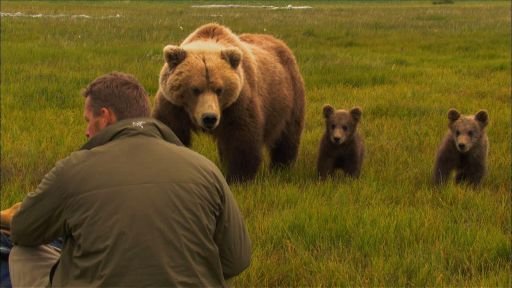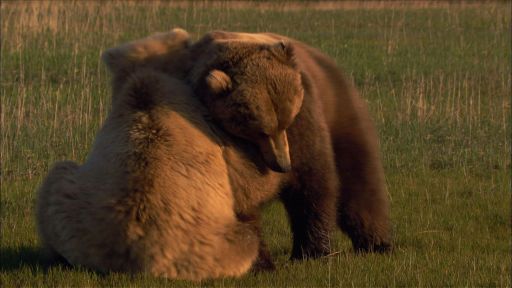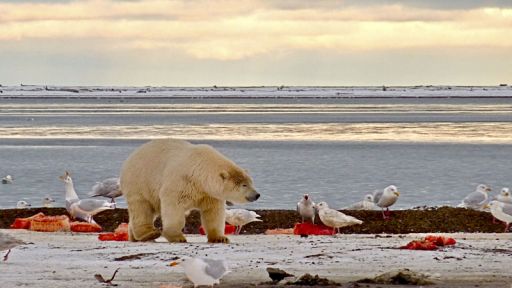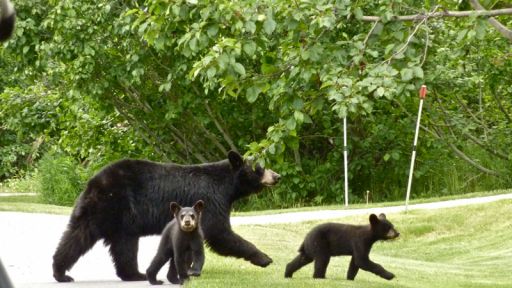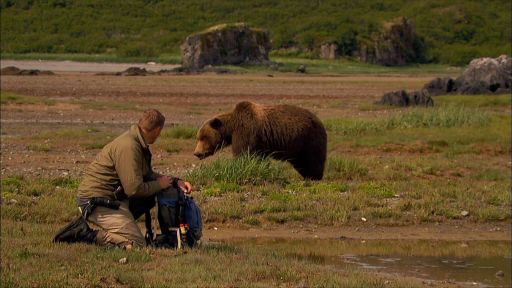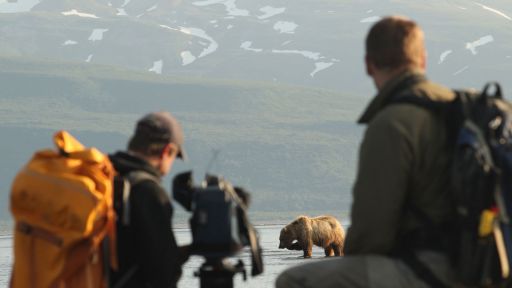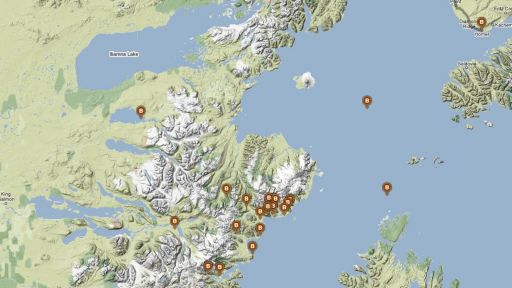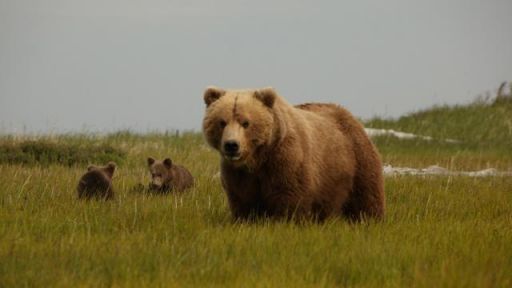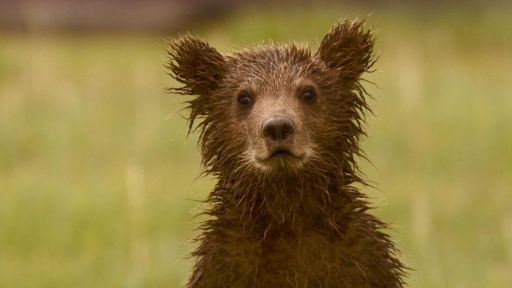
Class: Mammalia
Order: Carnivora
Family: Ursidae
Genus: Ursus
Species: U. maritimus
Size and Weight: Polar bears exhibit sexual dimorphism; male polar bears can be two to three times larger than female polar bears. Males range from about 8-10 feet (2.4-3 meters) in length, while females are generally 6-8 feet (1.8-2.4 m) in length. Their tails are 3-5 inches (7.5-12.5 cm) long. Male polar bears can weigh up to three times as much as the females. Males are typically 550-1700 lbs (250-771 kg), and females are 330-650 lbs (150-295 kg).
Fur and Adaptations to Arctic Environment: Polar bears are extremely well-adapted to their arctic environment. They have the thickest fur of any bear species. It’s composed of two layers. The layer closer to the body, the undercoat, consists of thick, plush hair that retains heat. The outer layer provides extra insulation and repels cold water and ice. This layer of “guard hairs” is not hair at all but is rather composed of clear, hollow tubes. The tubes trap air for insulation and also reflect all the visible wavelengths of light in their hollow airspace, which combine to make the fur look white, though it is in fact colorless. The white coloring provides excellent camouflage for the bears, allowing them to blend in with their snowy surroundings. Underneath their fur, polar bears have black skin which absorbs the heat of the sun, and below the skin is a thick, 4-inch layer of blubber. This blubber layer is particularly beneficial while polar bears swim, keeping them warm in the cold water and increasing buoyancy.
Polar bears also have fur on the bottoms of their paws, providing extra warmth and creating traction on the ice. The bottoms of their paws are also covered with small bumps called papillae. The paws are broad to distribute their weight as their walk across ice and snow, and tipped with long, powerful claws to help grip the ice.
Compared to other bears, the polar bear has an elongated body with a particularly long neck and a narrow skull. These features streamline the bear, making it an efficient swimmer. Large, flat, and partially webbed paws, functioning like oars, also help them navigate water.
Diet: Polar bears are classified as carnivores; they predominantly eat meat but occasionally eat vegetation. As the apex predators of the Arctic, they occupy the top level of the food chain and have no natural predators. Their major prey is ringed seals, but they also hunt bearded seals, hooded seals, and harp seals. After catching a seal, polar bears will consume the fat and skin first, often leaving the rest of the meat for other animals like Arctic foxes, ravens, Arctic gulls, and smaller bears, to scavenge. The fat is eaten before the rest of the meat for several reasons. Not only is fat easier for the bears to digest, but it also contains more calories, which makes for more efficient eating. In addition, the process of digesting protein requires water from the body, whereas the digestion of fat actually releases water. This allows the metabolism of the bears to function without the need to drink water, which they do not do.
Polar bears require great amounts of energy to maintain their body temperature, and must build up fat reserves to do that. Seals are optimal food sources because their blubber is so rich in calories and fat. Polar bears need to consume approximately 4.4 lbs (2 kg) of fat daily – a 121 lbs seal (55 kg) provides about 8 days worth of energy.
Though polar bears are excellent swimmers, they rarely catch seals in open water, and must employ a variety of hunting methods. The most common method they use is still-hunting, in which the bear waits motionlessly for hours, or even days, outside seal breathing holes for a seal to surface. When a seal does come to the surface, the bear bites the seal on the head and neck, flips it onto the ice with its claws, and drags it from the water. Polar bears may also stalk seals basking on ice edges, pouncing on them before they can return to the water. Polar bears also hunt seals at birthing lairs. After locating a lair, the bears stand on their hind legs for momentum and slam down their front paws, breaking through the roof to get to their prey.
Very rarely, they have been observed hunting beluga whales and juvenile walruses. Polar bears are opportunistic hunters and will prey on whales caught in pack ice openings, or scavenge on beluga and bowhead whale, narwhal, walrus, seal carcasses. When other food is unavailable on land, they seek out alternative food sources and eat anything from reindeer, rodents, birds, fish, eggs, berries, vegetation, kelp, and even human garbage.
Habitat: Polar bears depend heavily on pack ice or ice floes either far out at sea, or at or near continental or island coastlines. They prefer areas where continual wind and water currents cause the ice to undergo a cycle of melting and refreezing, preventing it from completely and permanently solidifying. These areas have high numbers of seals, polar bears’ preferred food source. Though polar bears spend time on land, especially during the summer months, they live predominantly out on the ice, following the seals, sometimes finding themselves hundreds of miles from land.
Arctic air temperatures are -29 F (-34 C) on average in the winter and 32 F (0 C) on average in the summer. In Northeastern Siberia, winter temperatures have reached lows of -92 F (-69 C). Ocean temperatures in the arctic drop to 29 F (-1.5 C) in summer and 28 F (-2 C), the freezing point of seawater, in winter.
Polar bear home ranges are typically larger than those of other mammals due to the seasonal and yearly transience of the ice. The prevalence of food, mates, and dens within a particular area may also determine the size of a home range. Bears near the Canadian Arctic Islands have relatively small home ranges—19,305-23,166 sq miles (50,000-60,000 sq. km). Bears that live in proximity to Bering and Chukchi Seas often have larger territories that can be up to 135,135 sq miles (350,000 sq. km). Polar bears do not mark their territory or aggressively guard it.
Geography: Polar bears are found throughout the Northern Hemispheric Arctic Circle along the north and northwestern coasts of Alaska, throughout Canada’s north arctic islands down to its southern Hudson Bay area, Greenland, in islands off the coast of Norway, and along the northern coast of Russia. Scientists have identified 19 subpopulations in ice caps across the Arctic region.
Lifespan: Polar bears in the wild can live between 20 and 25 years. In captivity, some have lived into their 40’s.
Breeding: Polar bears reach maturity between the ages of 3 and 5 years. Females typically have their first litter at 5 or 6 while most males do not breed until 8 or 10. Female polar bears give birth every 2-3 years and have around five litters during their lifetime—one of lowest mammalian reproductive rates.
The mating season runs from late March through May. Males travel great distances, and have been known to follow a female for 62 miles (100 km) to find a mate. A breeding pair stays together for a week and mates several times during that period. The polar bear gestation period is 8 months, though the development of the embryo is about 4 months. The gestation period includes delayed implantation, an evolutionary strategy in which the blastocyst simply floats in the uterus and does not implant in the uterine wall until conditions are optimal for its survival. Females often refrain from mating if they do not have substantial food sources or the necessary fat reserves.
Pregnant females must eat a great deal throughout the summer and autumn to prepare for hibernation; a pregnant female needs to gain around 441 lbs (200 kg) to sustain both herself and her cubs throughout her pregnancy. Cubs are born while the females are hibernating. A litter size can range from 1-4 cubs, but is typically 2. They are born blind, hairless, and deaf. Within the first month of life, their eyes open, and within 2 months, they grow teeth and fur and begin to walk. Cubs weigh around 1 pound at birth but are nursed to a weight of 20-30 pounds by the time they leave the den in March or April.
Maternity dens are typically dug in south-facing snowdrifts on thick stable pack ice at sea, or on hilly and mountain slopes on land. Dens usually contain an entrance tunnel leading into several concave rooms with an inside temperature up to 40 degrees warmer than the outside, maintained by body heat and insulation from the snow.
In the weeks immediately following hibernation, mothers and cubs continue to stay close to the den as the cubs acclimate to the outside world. During this time, they spend the majority of the time in the den, and often sleep there at night. When they are ready, they leave the den and travel toward the edge of the sea ice, where the thin and hungry mother bears that has not eaten for months immediately begins to hunt, giving her cubs a first lesson in how it’s done. Cubs remain with their mothers for just over 2 years, denning with her for one or two more winters. The family breaks up after 24-28 months, after which females breed again and the now independent cubs enter what is called the sub-adult stage, which continues until they reach maturity at 5-6 years.
Hibernation: Unlike other bears, all polar bears do not hibernate for the winter – only pregnant female polar bears do. However, theirs is not a deep hibernation. They do not urinate or defecate, their heart rate slows slightly, and their body temperature either remains the same or drops one or two degrees for the duration of their months-long sleep, which is easily disturbed. Pregnant females wake for the birth of their cubs in the den, and for necessary elements of their care.
Social Structure and Behavior: Polar bears generally lead solitary lives, with the exception of mothers raising cubs and breeding pairs. Mothers are highly affectionate and attentive to their cubs, and cubs spend much time playing, chasing and tackling one another. Many bears do congregate at large kill sites, such as areas with large whale carcasses. And some adult and sub-adult males, however, sometimes form friendships which can last weeks or sometimes even years. These males may travel, feed, and play-fight together.
Though polar bears are not territorial, aggression occurs between males competing for breeding females, in mothers protecting cubs, and in cases where bears may try to steal or scavenge food from another’s kill.
Polar bears can communicate using a broad variety of vocalizations, such as growling, hissing, panting, snorting, teeth champing, whimpering, braying, lip-smacking, and chuffing. Cubs typically vocalize more than adults, and mothers communicate extensively with their cubs. In addition to vocalizations, she may use her muzzle, paws, and body to comfort, protect, or discipline her cubs.
Males may initiate play-fighting by approaching another male with its head down and its mouth closed while avoiding eye contact. They gently touch the face and neck of the other bear with its nose or mouth. Once play-fighting is initiated, both bears stand on their hind legs and try to push each other over with their paws.
Polar bears can travel thousands of miles yearly, swimming and walking, following the pack ice to hunt. Polar bears are excellent swimmers. They can swim at speeds of up to 6 mph, and can swim continuously for 62 miles (100 km). Some have been observed swimming 200 miles (320 km) from land. They swim with their head and some of their back above the water in a doggy paddle style. Their back paws are held flat like rudders while their front paws propel them through the water. They are good divers as well, and can dive at least 10-15 feet below the surface. Polar bears walk in a distinctive swinging gait. Their average walking speed is 3.4 mph (5.5 kph), and they can run up to 25 mph (40kph). However, they usually move slowly and rest frequently to prevent overheating. Because of their heavy build and particular gait, they require more energy to move at a particular pace than other animals. Like humans, they walk on the soles of their feet, touching the ground with their heels first. Like other bears, they can stand and walk on their two hind feet for brief amounts of time.
Conservation status: The polar bear is classified as vulnerable on the International Union for Conservation of Nature (IUCN) Red List, and is listed as Threatened by the U.S. Fish and Wildlife Services. In 2008, the IUCN estimated that there were 20,000-25,000 polar bears left in the world, and predicted populations would continue to decrease. Some scientists believe that polar bears could be extinct or severely close to extinction by 2050. On May 14, 2008, the polar bear was listed under Endangered Species Act.
Threats: Polar bears vitally depend on the ice, so their biggest threat is global warming and melting sea ice. As the ice disappears, polar bears must travel longer distances across open water to reach prey, risking drowning in the ocean while searching for the next ice floe on which to hunt or rest. The melting sea ice also affects seal population numbers, jeopardizing the polar bears’ major food source.
Melting ice and shifts in climate have caused grizzly bears to move more and more into arctic tundra habitats in Canada which can lead to grizzly-polar competition for resources.
Poaching and unregulated hunting further decreases polar bear populations. Polar bears drawn to human settlements by garbage or nearby animal carcasses are often killed.
Additional Facts:
- Their scientific name, Ursus maritimus, means “sea bear” in Latin.
- Polar bears are called Nanuuq by Eskimos. Other names they are known by include ice bear and isbj.
- Polar bears probably evolved during the Pleistocene Era. Splitting from brown bears in Asia only around 150,000 years ago. The oldest known fossil of a polar bear is less than 100,000 years old.
- Polar bears have decreased in size as they evolved.
- Polar bears are one of the largest land carnivores and are the most carnivorous member of the bear family.
- Polar bears have a keen sense of smell. They can smell a carcass or a live seal from many miles away.
- Their hearing is as sensitive as that of a human. They are able to hear a range of frequencies from 0.02 kHz to 20 kHz. Their eyesight is also similar to ours, and their eyes are covered with a membrane to protect them from ultraviolet light damage.
- Only female polar bears can be tracked using radio collars. Male polar bears have necks wider than their heads, and the collars simply fall off.
- They molt in the summer months and grow a new coat. By the next spring, the coat may look yellowish from seal oil stains.
- Polar bears sometimes wash their fur in ice or snow during or after feeding.
- Polar bears can eat 100 lbs of seal blubber in one sitting.
- Bears may beg to share another bear’s kill. They adopt a submissive position by laying on or close to ground, circle around carcass, and touch the nose of the bear who ‘owns’ the carcass.
- According to Guinness, the heaviest polar bear ever documented was shot in Alaska in 1960. It weighed 2,209 lbs, stood nearly 12 feet tall, and was displayed at the 1962 Seattle World’s Fair.


